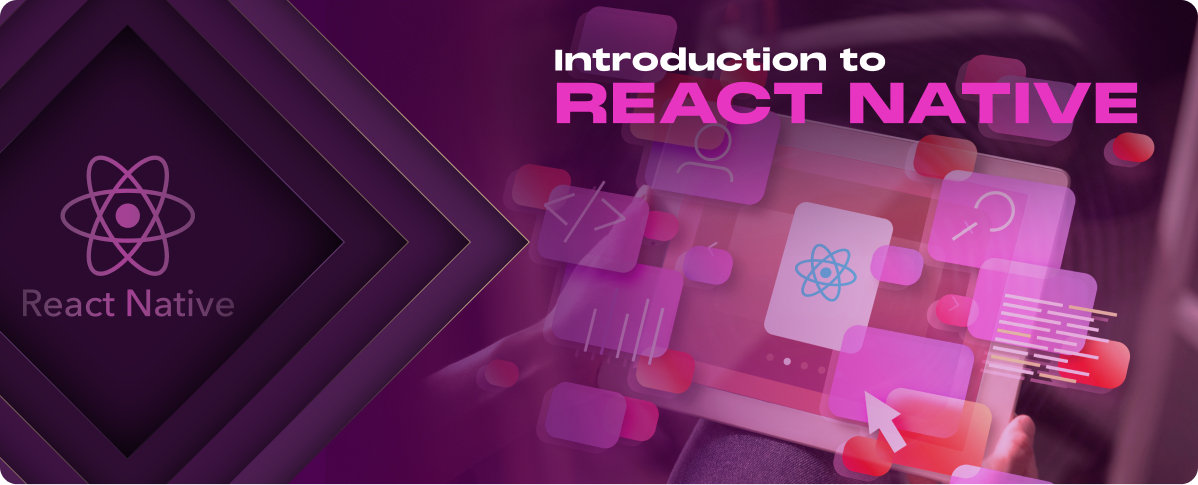What is React Native?
Definition and Origin
React Native is an open-source framework developed by Facebook for building native mobile apps using JavaScript and React. Its primary goal is to enable developers to use the same codebase for their applications across multiple platforms, primarily iOS and Android, without sacrificing performance or the user experience associated with native apps.
React Native was first introduced by Facebook in 2015. The idea stemmed from the company’s need to streamline its mobile development process. Before React Native, Facebook had to maintain separate codebases for their mobile applications: Objective-C or Swift for iOS and Java or Kotlin for Android. This approach was resource-intensive and inefficient.
Core Concept
The core concept of React Native revolves around the idea of writing mobile applications using JavaScript and React. Unlike traditional mobile development approaches, which require separate languages and frameworks for iOS (Objective-C or Swift) and Android (Java or Kotlin), React Native uses JavaScript to define the app’s logic and UI components. These components are then rendered using the native APIs of the mobile platform, providing a native look and feel to the end-user.
Cross-Platform Capability
One of the most compelling features of React Native is its cross-platform capability. With React Native, developers can write the code once in JavaScript and deploy it on both iOS and Android platforms. This not only speeds up the development process but also reduces the cost and complexity of maintaining separate codebases for each platform.
React Native’s cross-platform approach does not compromise performance either. The framework translates your JavaScript code into native views before rendering, ensuring that the app performs as well as a native app written in Swift or Java.
Read our article on how React Native compares with other cross-platform frameworks: Best Cross-Platform Mobile Development Tools In 2024 for comprehensive insights.
Through React Native, learning React principles becomes a gateway to mobile app development, making it an excellent choice for developers looking to expand their skills from web to mobile. This approach has made React Native a popular choice among companies and developers, offering a seamless way to build efficient and high-quality mobile apps.
Benefits of React Native
React Native brings together the best web and mobile app development, offering numerous advantages that make it an attractive choice for developers and companies.
React Native key benefits include:
1. Cross-Platform Development
React Native allows developers to write a single codebase to build applications for both iOS and Android platforms. This cross-platform capability significantly reduces development time and effort, as developers can share a large portion of their code across both platforms, streamlining the development process and ensuring consistency in the app’s functionality and appearance on different devices.
2. Performance
While React Native apps are built using JavaScript, they run as native code, offering performance that closely matches that of apps built using native development languages. React Native’s architecture is optimized for mobile devices, using native components that result in smooth animations and responsive interfaces, providing a high-quality user experience.
3. Community and Ecosystem
React Native has a large and active community of developers contributing to its rich library, tools, and plugin ecosystem. This support system offers a wealth of resources, including pre-built components and extensions that can accelerate development and solve common problems efficiently. Whether you’re looking for a specific functionality or need help troubleshooting, the community is a valuable resource.
4. Live and Hot Reloading
React Native’s live and hot reloading features significantly enhance developer productivity. Live reloading refreshes the entire app when code changes are made, while hot reloading updates only the components that have been modified without losing the app’s current state. These features allow developers to see changes in real-time, making the development process faster and more intuitive.
5. Familiarity with Web Developers
For developers with a web development background, particularly those already familiar with React, transitioning to React Native is straightforward. The use of JavaScript and React principles means that web developers can leverage their existing skills and knowledge to build mobile apps, reducing the learning curve and enabling a smoother entry into mobile development.
6. Access to Native Functionality
React Native provides the ability to access and utilize native device functionality, such as the camera, GPS, and accelerometer, through its bridge to native components. This ensures that React Native apps can offer a full range of features and capabilities, just like apps developed with native languages.
7. Cost-Effectiveness
By enabling cross-platform development with a single codebase, React Native reduces the need for separate development teams for iOS and Android, cutting down on labor costs. Additionally, the framework’s efficiency and the availability of numerous libraries and tools can further decrease development costs, making React Native a cost-effective solution for app development projects.
8. Flexibility with UI/UX Design
React Native’s component-based structure allows developers to create dynamic and complex user interfaces. The framework supports the creation of customizable and reusable UI components, which can be integrated seamlessly across different platforms, ensuring a consistent and high-quality user experience.
Use Cases of React Native
React Native’s versatility and efficiency have made it a popular choice for various applications, from social media platforms to e-commerce solutions and enterprise-grade apps. Here’s how React Native stands out in various use cases:
1. Social Media Applications
React Native is an excellent choice for developing social media applications that require smooth animations, fast load times, and real-time data processing. Its ability to handle high levels of user interaction and data updates in real-time makes it ideal for social media apps, where users expect seamless experiences across devices.
For example, Instagram and Facebook have utilized React Native to enhance their mobile experiences, leveraging its cross-platform capabilities to maintain consistency and performance across iOS and Android.
2. E-commerce Platforms
E-commerce applications benefit greatly from React Native’s cross-platform development approach, allowing businesses to reach a wider audience without compromising performance or user experience.
React Native enables the development of visually appealing, responsive, and intuitive shopping experiences that can efficiently handle complex functionalities such as payment processing, product display, and user authentication.
The framework’s support for third-party plugins and integrations simplifies the inclusion of essential e-commerce features, such as push notifications for cart reminders and special offers, enhancing user engagement and retention.
3. Enterprise Solutions
For enterprise applications, React Native offers scalability, security, and reliability, making it suitable for building internal tools, customer relationship management (CRM) systems, and other business solutions that require robust performance and integration with existing systems.
The framework’s modular architecture allows for the development of large-scale applications with complex functionalities, while its cross-platform nature ensures that enterprises can deploy their solutions on multiple platforms without a significant increase in development time and costs.
React Native’s active community and ecosystem provide access to libraries and tools that can accelerate the development of enterprise applications, from authentication and encryption to connectivity with databases and APIs.




































